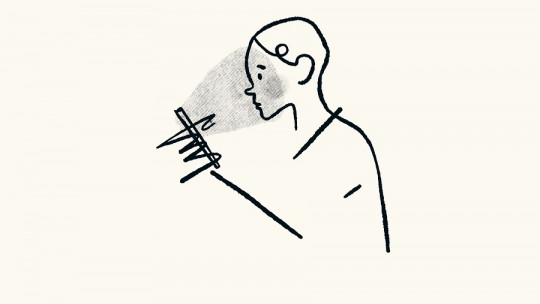Systematic desensitization (SD) is a technique developed by Joseph Wolpe in 1958, which aims to end both anxiety responses and avoidance behaviors typical of anxiety disorders.
Since these behaviors are especially important in the maintenance of phobic disorders, it is a technique widely used in their treatment. In this article we will see what it consists of, and the type of psychological disorders in which it is useful in therapy.
What is systematic desensitization?
What is known as systematic desensitization is a form of psychotherapeutic intervention used in the treatment of anxiety disorders and psychological alterations associated with them. It proposes a type of training in which patients learn to manage the emotions produced by anxiety-inducing experiences, following a curve of ascending difficulty, from easy to more complicated, adapting to the person’s progress.
Thus, systematic desensitization is based on the idea that to overcome an anxiety disorder it is necessary to learn to face that discomfort, instead of trying to block it or escape from it. In this way, habituation arrives, with which the intense reaction to anxiety-inducing stimuli gradually fades away.
As proposed by Joseph Wolpe, is based on classical conditioning. The principle is that the intensity of a response such as anxiety can be reduced through the emission of an incompatible response, such as relaxation. The appearance of certain phobic stimuli produces anxiety responses. Certain stimuli automatically produce anxiety responses. Jointly, The aim is to provoke an automatic relaxation response that interferes with the discomfort of the aversive stimulus.
How does systematic desensitization work?
The standardized procedure for systematic desensitization includes four steps. Relaxation training, a construction of hierarchies, evaluation and practice in imagination and systematic desensitization itself. Before proceeding to relaxation training, it is necessary to explain the technique to the client, to motivate him and make him understand the basic strategy and the principles of technical effectiveness.
You must explain to him what incompatible responses are and why if one appears, the other cannot appear (such as relaxation and tension), what a hierarchy of stimuli is, what counterconditioning and generalization are in terms that he can understand.
1. Relaxation training
The relaxation response that the patient will use to combat anxiety will preferably be one that the patient already knows. It is possible to use any procedure, but if possible it is better to use some type of relaxation that the patient themselves can put into practice quickly and effectively.
Otherwise, techniques such as progressive relaxation or breathing control can be taught, which are easy techniques to learn. The fundamental thing is that in the anxious situation, these incompatible relaxation responses can be applied easily, quickly, and reduce anxiety effectively.
2. Anxiety hierarchy
When we want to apply desensitization we have to organize the feared situations. This is what we call an anxiety hierarchy, where we list all the potentially anxiety-inducing situations related to the topic to be discussed and order them according to the degree of anxiety they generate. To quantify the anxiety it generates, a scale from 0 to 100 is used, where the situation with a score of 0 does not generate anxiety at all and the one scored with a 100 is the one that generates the most anxiety of all.
To develop the hierarchy we do it through brainstorming where the patient generates situations that cause anxiety. These situations are written down, specified, and given a number on a scale from 0 to 100. Many times it can be difficult to begin assigning numbers. A good way to start is to use anchors. First generate the items that generate the least and most anxiety, which will be 0 and 100 respectively, and an intermediate item that will be 50. From here the items are easier to order.
3. Practice in imagination
Since we will use the exposure in imagination, we will have to evaluate the patient’s ability to imagine scenes. The patient will be asked to imagine a scene and then the details of the scene will be asked to see how vivid the visualization is in imagination.
4. Desensitization itself
Once this is assured, the situations that cause anxiety will be presented. This presentation can be in imagination or live. You will start with the situation that causes zero anxiety and gradually move up the anxiety hierarchy. The first presentations are made briefly, but the presentation time will increase more and more. At the same time that the anxiety-producing item is presented, previously learned relaxation strategies are put into action to interfere with anxiety and unlearn the anxious response.
Naturally, the more time the patient spends in exposure, the greater the desensitization. Furthermore, when the anxiety produced by a situation is reduced, it generalizes to situations that are above it. The items are considered passed when they produce zero anxiety. That is, until a situation generates absolutely no anxiety, you cannot move on to the next.
Applications of systematic desensitization
Systematic desensitization is an appropriate treatment when the therapist directs his efforts to the elimination of phobias and anxieties as long as a series of conditions are met. For a conditioned response to be susceptible to being modified through systematic desensitization, it must be a response to a specific situation or stimulus, which is not due to irrational beliefs or overvalued ideas, that it is an irrational fear and that there is an adequate response incompatible with that of anxiety.
In addition to its use in phobias and anxiety disorders, it may also be suitable for treating anxiety about specific stimuli without making them phobic. For example in sexual dysfunctions, alcoholism, other addictions, paraphilias or insomnia.









